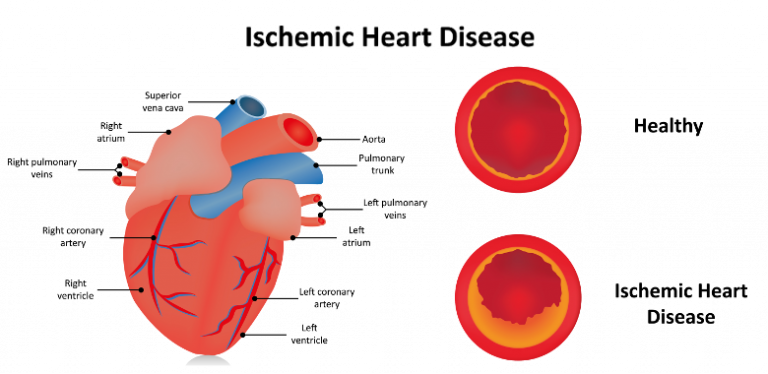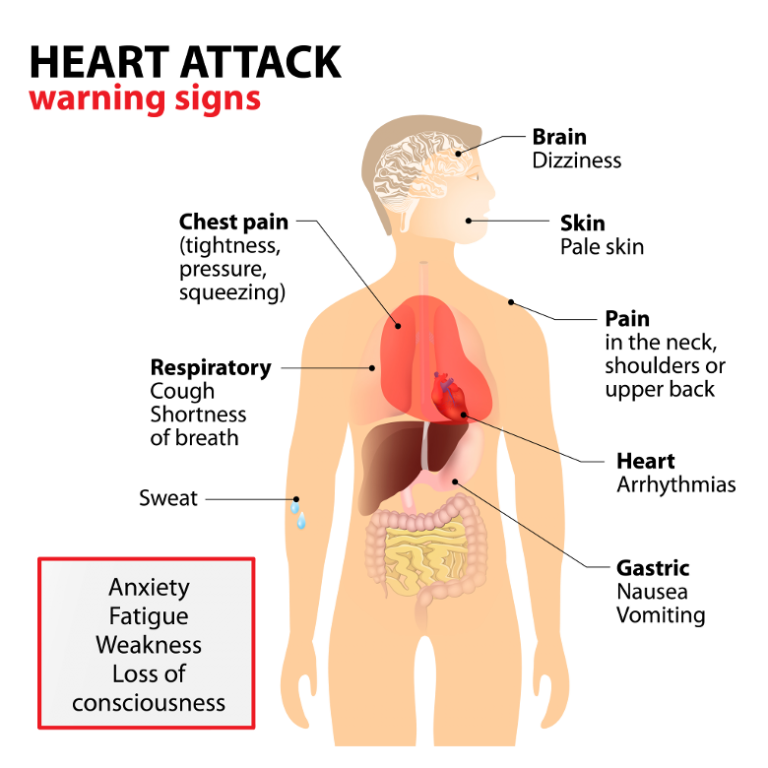Definition and Causes

Also known as coronary artery disease, this is a group of diseases that are brought about by the build-up of plaque in the coronary arteries which play the all-important function of supplying the heart muscle with oxygen-rich blood. Consisting of fat, cholesterol, calcium, as well as other substances found in the blood, plaque hardens over time, causing a narrowing of the arteries and a reduction in the amount of blood flowing to the heart.
Symptoms
Certain individuals suffering from coronary heart disease may experience no symptoms. This is known as silent coronary heart disease. In such cases, the disease will only be diagnosed when the person encounters symptoms of a heart attack, heart failure, or irregular heartbeat.

The majority of heart attacks entail discomfort or pain in the center or left side of the chest, lasting for more than a few minutes. At times, such discomfort or pain may disappear only to return. Chest discomfort or pain that does not go away or varies from the usual experience may actually be a sign of a heart attack. Apart from chest discomfort and pain, commonly experienced symptoms of a heart attack include discomfort in one or both arms, the neck, jaw, back, and upper portion of the stomach, as well as shortness of breath, nausea, faintness, vomiting, fatigue, and sleeping difficulties.
As a precaution, individuals who experience chest discomfort or pain should visit a doctor for a check-up.
Risk Factors
Multiple risk factors exist that can increase the likelihood of the onset of coronary heart disease. Knowing these risks allow for preemptive actions that can reduce the probability of contracting heart disease.

The major risk factors linked to coronary heart disease are:
- Unhealthy blood cholesterol levels
- This occurs when LDL cholesterol (commonly referred to as bad cholesterol) is high and HDL cholesterol (commonly known as good cholesterol) is low.
- High blood pressure
- A sustained blood pressure at or above 140/90 mmHg is generally regarded as high. For those suffering from chronic kidney disease or diabetes, blood pressure is considered high when it regularly measures 180/80 mmHg or more.
- Smoking
- Cigarette smoking can harm blood vessels, causing them to tighten, thereby raising blood pressure level.
- Resistance to insulin
- This is a condition in which the body is unable to properly utilize its own insulin, impeding the movement of blood sugar into the body’s cells, resulting in high blood sugar levels that over time, damages blood vessels and increase the chances of a heart attack.
- Diabetes
- This disease causes blood sugar level in the body to be elevated due to an inability to produce sufficient insulin or to make appropriate use of it.
- Overweight / obesity
- This refers to an individual whose weight is deemed to have exceeded the healthy range for a given height.
- Metabolic Syndrome
- A cluster of conditions that exist together, metallic syndrome increases the risk of heart disease.
- Metabolic syndrome is generally composed of 5 conditions, namely a broad waist, a high level of triglyceride, a low HDL cholesterol level, a high blood pressure, and a high fasting blood sugar level. Possession of any 3 of these risk factors may be a basis for the diagnosis of metabolic syndrome.
- In particular, high LDL cholesterol and high blood pressure can contribute to the buildup of plaques in your arteries. These plaques can narrow and harden your arteries, which can lead to a heart attack or stroke.
- Physical inactivity / sedentary lifestyle
- The absence or lack of regular physical activity can heighten the risk of heart disease, especially for those who already bear other relevant risk factors.
- Unhealthy diet
- Regular consumption of foods rich in saturated and trans fats, cholesterol, sodium, as well as sugar increases the likelihood of heart disease.
- History of heart disease in the family
- Individuals who have a mother or sister diagnosed with heart disease prior to 65 years of age, or have a father or brother diagnosed before age 55, have a higher chance of developing coronary heart disease.
- Age
- Lifestyle and genetic considerations aside, the older an individual, the higher the risk of contracting coronary heart disease due to the increased build-up of plague in the arteries over time. It is generally understood that the risk of coronary heart disease starts to rise in males from the age of 45, and in females from the age of 55.
Steps to Take

Because the likelihood of developing coronary heart disease increases with the number of applicable risk factors, early action taken to reduce risk can be potent in forestalling or even preventing the onset of various heart conditions. Early action that can be taken comes predominantly in the form of lifestyle changes: consuming a heart-healthy diet, regularly engaging in physical activity, ensuring the maintenance of a healthy body mass index (BMI), abstaining from smoking, and optimally managing stress levels.
In addition to making a long term commitment to leading a healthy lifestyle, annual health screening to assess various cholesterol levels is highly recommended in order to obtain a periodic risk assessment of developing coronary heart disease. This allows for the optimal management of an individual’s heart health, especially for men aged 45 and up, women who are 55 years or older, and individuals who have a family history of heart disease.
Those for whom it is deemed that lifestyle changes alone are insufficient to avert or bring under control certain heart-related conditions, medication may be required. Heart patients with more severe conditions may even require surgery as a form of treatment.
(Adapted from the National Institutes of Health)
